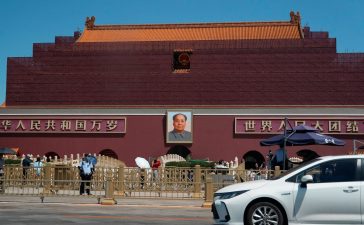Costa Rica is home to one of the world’s Blue Zones, where people live longer and healthier lives than average. I’m from a small town in the region of Cartago, called Llano Grande, which is known for its rich agriculture.
As a cookbook author and cooking teacher who was born and raised here, I have always felt that our diet and “pura vida” lifestyle is our secret to longevity.
To Costa Ricans, what we eat is just as important as the experience in the kitchen and around the table. We deeply value the community that comes with cooking. Growing up, I always helped my family prepare our meals, and even harvested some of the ingredients.
Lunches and dinners always lasted for at least an hour, and it was our time to talk about our day. This kind of mindful, collective approach to food is something I love to share with the students who take my cooking classes. It is not just about the food we eat, but the connections that happen around it.
What Costa Ricans eat to live longer and happier lives
The best way to describe Costa Rican cuisine is simple and fresh. Our diet relies highly on staples like fresh vegetables, fruits, grains, and beans.
Here are some of the foods that I cook and eat every day to feel healthier and happier in the long run.
1. Beans
Beans are a great source of protein, fiber, complex carbohydrates, prebiotics, vitamins and minerals. They have been linked to reduced risk of chronic diseases like heart disease and diabetes.
Black and red beans are the most popular, usually served as part of a casado (our traditional dish of rice, beans, veggies and protein) or as a soup consisting of beans and vegetables.
Chickpeas and lentils are popular here and can be used as a substitute for the traditional black beans.
2. Fresh fruit and vegetables
Fruit and vegetables in Costa Rica are generally eaten fresh, not out of a can or a freezer. We typically get our fruits and veggies from local markets called verdulerias.
Some of the most common ones in our diet are papaya, mango, banana, watermelon, pineapple and passion fruit, and they are either eaten on their own or made into drinks and juices.
We use a variety of vegetables in Costa Rican cooking, including potatoes, carrots, tomatoes, avocado, onion, beets, yucca and zucchini. Veggies are either eaten raw, in simple salads dressed with lime, or prepared as picadillo, chopped and boiled, occasionally with some animal protein mixed in for flavor.
Picadillo de chayote is probably my favorite. Chayote is a type of squash that is native to Central and South America, and not very common in the United States. It is green and crisp, and it tastes similar to a jicama.
3. Rice and corn
Grains like rice and corn are present in our diet, but mainly as a complement to the beans and vegetables that we eat.
For instance, the tortillas are used to eat the picadillo in what we call “gallos.” Arroz con pollo is a traditional Costa Rican dish consisting of rice, a lot of chopped vegetables and different pieces of chicken.
This meal is a very popular at celebrations like birthdays, but it is also very commonly enjoyed day to day.
4. Coffee
Costa Rican coffee is known for being high in antioxidants, which can help reduce inflammation. Sugary drinks are generally not a big part of the coffee-drinking culture.
Coffee here is enjoyed black or with a bit of milk. And as much as any other meal, a cup is best enjoyed slowly — we do take our time to drink.
My favorite Costa Rican longevity recipe
We eat rice and beans, either black or red, two to three times a day. For lunch this meal is called casado. For breakfast, it is called gallo pinto and consists of rice and beans mixed with onions, peppers, and cilantro, accompanied with corn tortillas and coffee.
Thanks to its combination of whole grains, protein, amino acids and antioxidants, longevity researcher and Blue Zones founder Dan Buettner considers gallo pinto to be the healthiest breakfast in the world. It is amazing how such a simple dish can be packed with so many health benefits.
Here is my recipe for Gallo Pinto, so you can make it at home.
Here is an example of my favorite Costa Rican breakfast, Gallo Pinto.
Photo: Melissa Guzman
Ingredients:
- 2/3 cup of cooked black beans
- 1 1/4 cup of cooked rice
- 2 tablespoons chopped onion
- 2 tablespoons chopped pepper
- 2 tablespoons minced cilantro
- 1/2 teaspoon salsa lizano (optional)
- 1/2 teaspoon salt
- 1/2 teaspoon cumin
- 1/4 teaspoon pepper
Steps:
- Heat up a pan over medium-high heat, add olive oil, and let it get hot
- Add onions, peppers, cilantro, garlic, cumin, salt, and pepper
- Cook for three to five minutes until the onion is translucent
- Mix in the beans, stir, and reduce heat to medium
- Add the lizano sauce, stir, and cook for five more minutes
- Add the rice, stir, and cook for a few more minutes, to incorporate all the flavors in the rice
To my mind, the recipe for why we live longer, healthier, and happier lives in Costa Rica is a simple one: Fresh ingredients that are prepared with care and meals that are intentionally enjoyed and shared with loved ones.
Melissa Guzman is a Costa Rican cookbook author and cooking teacher from Llano Grande, Costa Rica. She is the author of “Living Longer, Healthier, and Happier: Recipes from Costa Rica.” Follow Melissa on Instagram @recipesfromcostarica.
Want to be a successful, confident communicator? Take CNBC’s new online course Become an Effective Communicator: Master Public Speaking. We’ll teach you how to speak clearly and confidently, calm your nerves, what to say and not say, and body language techniques to make a great first impression. Sign up today and use code EARLYBIRD for an introductory discount of 30% off through July 10, 2024.









